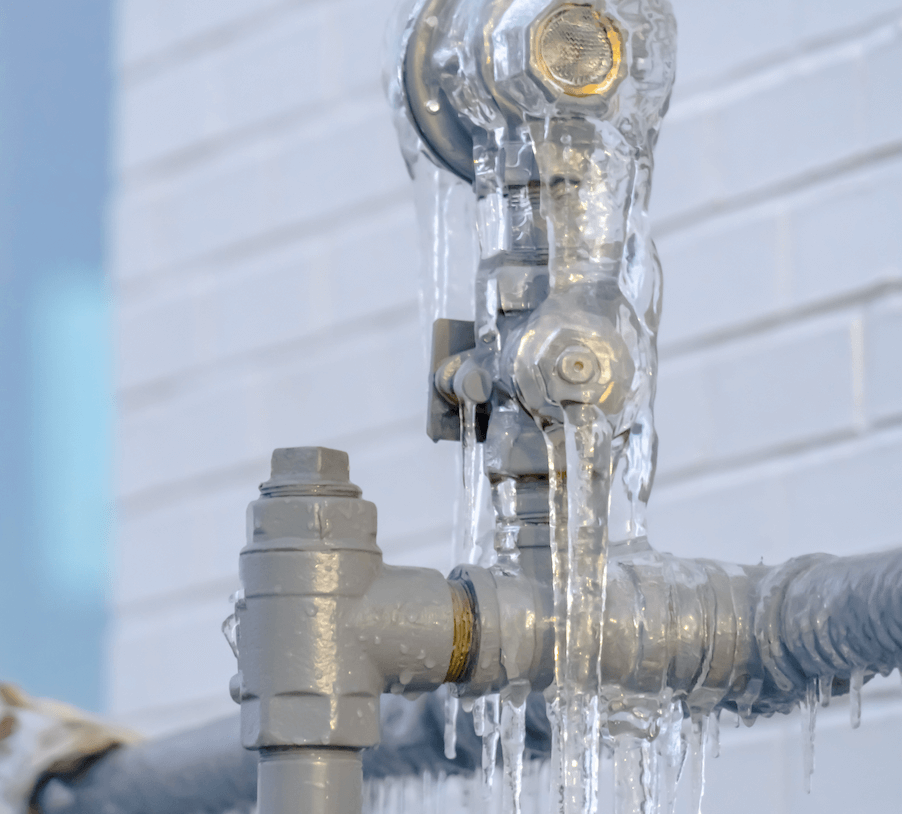Were you searching for answers on Preventing and dealing with frozen pipes?

Winter can damage your plumbing, especially by freezing pipes. Below's how to avoid it from happening and what to do if it does.
Introduction
As temperature levels drop, the danger of frozen pipelines boosts, potentially causing expensive fixings and water damage. Comprehending exactly how to prevent frozen pipes is critical for homeowners in cold climates.
Comprehending Icy Pipelines
What triggers pipes to freeze?
Pipes freeze when exposed to temperatures listed below 32 ° F (0 ° C) for expanded durations. As water inside the pipelines freezes, it expands, putting pressure on the pipeline wall surfaces and possibly causing them to burst.
Threats and damages
Icy pipelines can lead to water supply disruptions, residential property damage, and pricey fixings. Burst pipelines can flood homes and create considerable architectural damages.
Indicators of Frozen Pipeline
Determining frozen pipes early can prevent them from rupturing.
How to identify frozen pipelines
Look for lowered water circulation from taps, unusual odors or sounds from pipes, and visible frost on subjected pipes.
Avoidance Tips
Protecting susceptible pipes
Cover pipelines in insulation sleeves or use warmth tape to safeguard them from freezing temperature levels. Focus on pipes in unheated or outside areas of the home.
Heating strategies
Maintain indoor rooms properly heated up, particularly areas with plumbing. Open cabinet doors to allow cozy air to flow around pipelines under sinks.
Securing Outside Plumbing
Garden hoses and exterior taps
Detach and drain yard pipes before winter. Mount frost-proof faucets or cover outdoor taps with protected caps.
What to Do If Your Pipes Freeze
Immediate activities to take
If you think icy pipelines, keep faucets open up to alleviate stress as the ice melts. Use a hairdryer or towels taken in warm water to thaw pipes gradually.
Long-Term Solutions
Architectural changes
Take into consideration rerouting pipes far from exterior walls or unheated areas. Add added insulation to attics, cellars, and crawl spaces.
Upgrading insulation
Invest in high-grade insulation for pipelines, attics, and wall surfaces. Appropriate insulation assists maintain regular temperatures and lowers the danger of icy pipes.
Verdict
Stopping frozen pipes calls for proactive procedures and quick actions. By recognizing the causes, indications, and safety nets, property owners can secure their pipes throughout cold weather.
5 Ways to Prevent Frozen Pipes
Drain Outdoor Faucets and Disconnect Hoses
First, close the shut-off valve that controls the flow of water in the pipe to your outdoor faucet. Then, head outside to disconnect and drain your hose and open the outdoor faucet to allow the water to completely drain out of the line. Turn off the faucet when done. Finally, head back to the shut-off valve and drain the remaining water inside the pipe into a bucket or container. Additionally, if you have a home irrigation system, you should consider hiring an expert to clear the system of water each year.
Insulate Pipes
One of the best and most cost-effective methods for preventing frozen water pipes is to wrap your pipes with insulation. This is especially important for areas in your home that aren’t exposed to heat, such as an attic. We suggest using foam sleeves, which can typically be found at your local hardware store.
Keep Heat Running at 65
Your pipes are located inside your walls, and the temperature there is much colder than the rest of the house. To prevent your pipes from freezing, The Insurance Information Institute suggests that you keep your home heated to at least 65 degrees, even when traveling. You may want to invest in smart devices that can keep an eye on the temperature in your home while you’re away.
Leave Water Dripping
Moving water — even a small trickle — can prevent ice from forming inside your pipes. When freezing temps are imminent, start a drip of water from all faucets that serve exposed pipes. Leaving a few faucets running will also help relieve pressure inside the pipes and help prevent a rupture if the water inside freezes.
Open Cupboard Doors
Warm your kitchen and bathroom pipes by opening cupboards and vanities. You should also leave your interior doors ajar to help warm air circulate evenly throughout your home.

Do you like more info about How to prepare your home plumbing for winter weather? Write feedback directly below. We will be delighted to find out your suggestions about this page. We hope that you come back again later on. Do you know about somebody else who is fascinated with the topic? Be sure promote it. We love your readership.
Visit
Comments on “Key Approaches for Preventing Frozen Plumbing in Cold Weather”